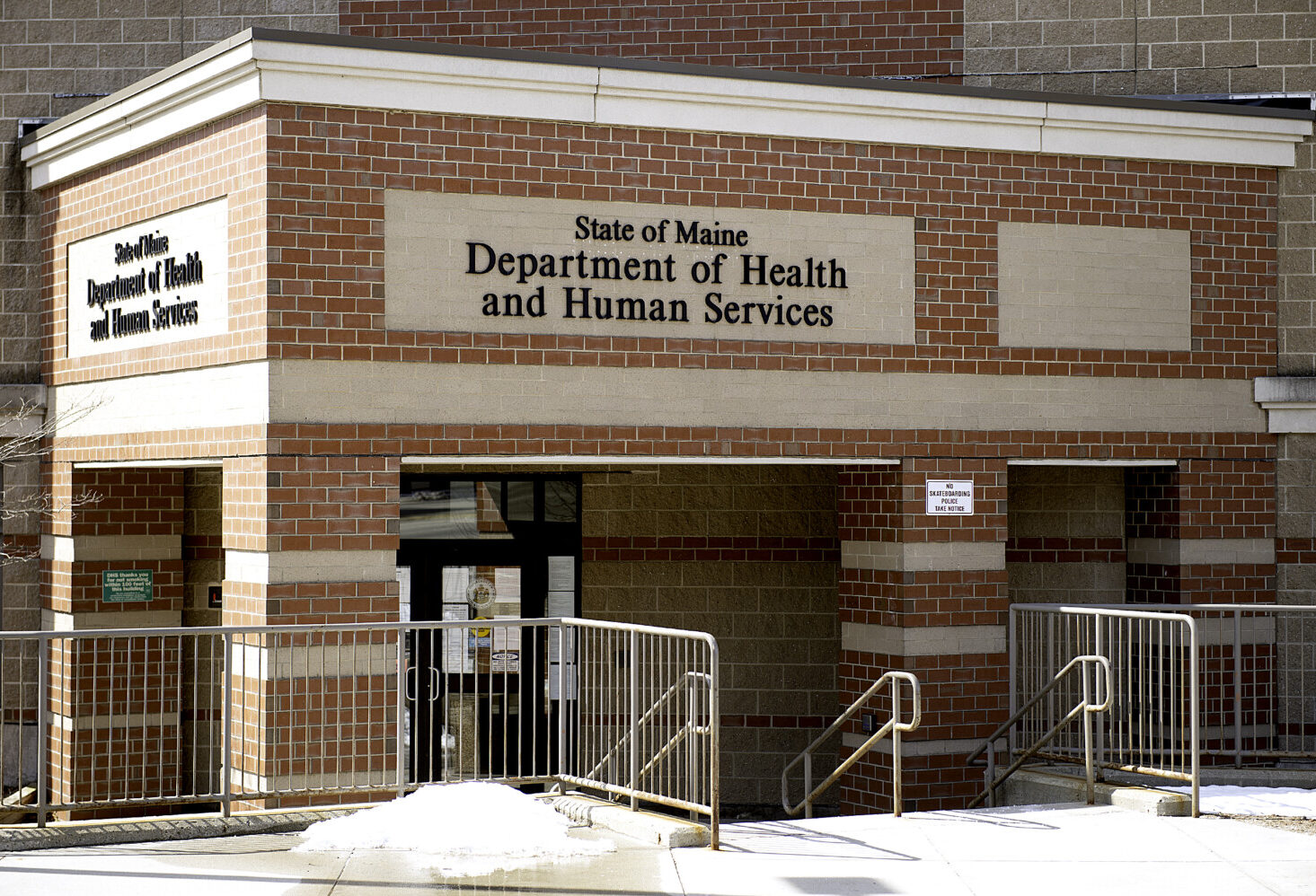
If Vice President Kamala Harris wins in November and becomes the first woman ever elected president in the U.S., she’ll owe a debt to other female politicians who tried before her, including Maine’s own Margaret Chase Smith.
Ben McCanna/Staff Photographer In January 1964, just two months after the assassination of President John F. Kennedy, the Republican senator from Maine stepped to the microphone, rose pinned to her lapel as always, and announced her plans. Margaret Chase Smith began by listing the reasons why she should run for president, as so many had encouraged her to do – her more than two decades of experience in Congress, her independence, and of course the chance for her to be a pioneer for women in government.

Then she listed the reasons she should not – limited financial resources and lack of a political operation chief among them, as well as the idea held by many that “no woman should ever dare to aspire to the White House, that this is a man’s world and that it should be kept that way.” “As gratifying as are the reasons advanced urging me to run, I find the reasons advanced against my running to be far more impelling ..
.” Smith said. “.
.. So, because of these very impelling reasons against my running, I have decided that .
..” Smith paused for several seconds.
“...
I shall enter the New Hampshire presidential preferential primary and the Illinois primary.” Now, 60 years later, Vice President Kamala Harris is attempting to fulfill the dream that Smith aspired to. Smith became the first woman in U.
S. history to have her name placed in nomination by a major party later that year. Others followed, including Shirley Chisholm in 1972 and Hillary Clinton, who became the first woman to become the nominee in 2016.
Clinton, of course, lost to Donald Trump, the Republican candidate that Harris is now trying to defeat. Margaret Chase Smith, a U.S.
senator from Skowhegan, ran for president in 1964 but came in last in the Republican primary. She joked when she announced her candidacy that she expected to experience a crushing defeat, but that she was partly motivated by those who said a woman didn’t belong in the race. Ben McCanna/Staff Photographer Janann Sherman, a retired history professor at the University of Memphis and author of the biography, “No Place for a Woman: A Life of Senator Margaret Chase Smith,” said Smith’s presidential run was something of a paradox.
“She had to run for president while acting like she didn’t really want it,” said Sherman, who lives on Vinalhaven. “But in the end, I think she got the best of what she set out to do.” And, Sherman said, people still talk about Smith with reverence to this day.
“It’s very heartening for me because I still get interviewed,” she said with a chuckle. “But I think it’s because she had such a strong image as a person of integrity, and you don’t see that anymore.” In many ways, Harris has downplayed the historic nature of her campaign, just as Smith did.
When she accepted the nomination in August, Harris didn’t mention her gender at all. Smith was deep into her third Senate term and had established herself as a pragmatic and moderate Republican by 1964. Kennedy’s assassination the previous November was a cataclysmic event in American history, and his successor, Lyndon Johnson, had to begin his reelection campaign as a nation healed.
He was seen as vulnerable. Richard Nixon, whom Kennedy defeated in 1960, was thought to be the Republican front-runner, but he opted not to run, which created a wide-open field. Two big names emerged: Barry Goldwater, a former Air Force general and U.
S. senator, who energized the conservative wing of the party; and Nelson Rockefeller, grandson of the Standard Oil co-founder who served in the Roosevelt, Truman and Eisenhower administrations, and who was considered a liberal Republican, when such a thing existed. Smith, then 66, saw room in the middle.
Not long before his assassination, Kennedy was asked directly about Smith’s possible candidacy because her name had been mentioned. Kennedy referred to Smith as a “very formidable political figure.” “I would think if I were a Republican candidate, I would not look forward to campaigning against Margaret Chase Smith in New Hampshire,” he said.
Margaret Chase Smith gains the interest of news photographers on her first day as a U.S. representative on Jan.
4, 1949. Ben McCanna/Staff Photographer She announced her candidacy during a speech on Jan. 27, 1964, at the Women’s National Press Club in Washington, D.
C. Although the occasion was serious, her remarks were often funny and elicited laughs from those gathered. She acknowledged to laughs that she didn’t have the backing of “party bosses” or major funding but played up her “political independence.
” She presented herself as a serious candidate but conceded her run would likely end in “certain and crushing defeat.” She didn’t even raise campaign funds. If people sent her donations, Smith would politely return them, often with a lengthy typed letter.
Sherman, who interviewed Smith numerous times over a period of six years for her biography, said the campaign “was never her idea.” Smith campaigned most in nearby New Hampshire, but she stayed in long enough to get primary votes in other states, including Illinois and Oregon. When the Republican National Convention was held in July in California, Smith had earned enough support for her name to be placed in nomination.
She earned 27 first-ballot votes, behind Goldwater, Rockefeller, Gov. William Scranton of Pennsylvania and Gov. George Romney of Michigan, the father of U.
S. Sen. Mitt Romney, the 2012 Republican nominee.
Goldwater was miles ahead of the other candidates, most of whom dropped out after the first ballot. Smith, however, refused to release her delegates, and finished a distant second on the final ballot. Margaret Chase Smith, a former U.
S. senator from Skowhegan, appears on the cover of this June 12, 1950, issue of Newsweek. Ben McCanna/Staff Photographer Today, far more people remember Smith for her famous “declaration of conscience” speech in 1950, during which she denounced Republican colleague Joseph McCarthy for his relentless but largely baseless claims that various entertainers, academics and left-wing politicians were communist sympathizers.
The historic presidential campaign has always been overshadowed. “I would say it’s perhaps a lesser-known achievement of hers,” added Nicole Potter, curator of collections at the Margaret Chase Smith Library in Skowhegan, her hometown. “I think it was seen as a way to make a stand, not purely about her gender, but about her record and merit.
” Sherman remembers a party Smith hosted for herself in 1989, marking the 25th anniversary of her run. “I think she felt she did an admirable job of introducing the idea of a woman for president,” she said. At the Smith Library, which was built onto the home she lived in from 1948 until her death in 1995 at age 97, there is an exhibit of her life that includes a section about her presidential run in 1964.
Among the ephemera displayed are campaign buttons, political cartoons from the time (some of which are blatantly sexist) and a handmade hat that a supporter had made for her to “throw in the ring,” Potter said. Before Smith, two women had run for president – Victoria Claflin Woodhull in 1872 and Belva Ann Bennett Lockwood in 1884 and 1888 – according to the Center for American Women and Politics. That was well before the 19th Amendment passed that granted women the right to vote.
In modern times, Smith was followed by Shirley Anita Chisholm in 1972. Chisholm was the first African American woman to serve in Congress and the first to run for president. The last three elections have seen a combined 11 women run for the White House, including Hillary Clinton, Carly Fiorina, Elizabeth Warren, Nikki Haley and Harris.
Nicole Potter, curator of collections at the Margaret Chase Smith Library in Skowhegan, leafs through materials, including this road map of New Hampshire that shows all the stops Smith made during her 1964 presidential campaign. Ben McCanna/Staff Photographer L. Sandy Maisel, a professor of government at Colby College, said Smith’s nomination at the convention was “a tribute to her as much as it was a protest to Goldwater.
” “No one thought she was serious, and I don’t think she ran to be the nominee,” he said. “But in terms of those who have come through since, she was a trailblazer.” Still, no woman has broken through what Clinton once called the “highest, hardest glass ceiling.
” Harris might not either – next month’s election between her and former President Donald Trump promises to be exceedingly close. Smith’s legacy has often been referenced by women who have been elected to federal and state office in Maine. Sen.
Susan Collins has retold a story many times about how she traveled to Washington, D.C., as a high school senior from Caribou and got to meet Smith.
Collins marked Smith’s historic run during a Senate speech in 2014, the 50th anniversary. “I am honored to celebrate an extraordinary Maine woman who tried and failed in one endeavor, but in so doing, inspired generations of Americans with her strength and determination, and demonstrated, as she once said, that a woman’s place is ‘everywhere,’” Collins said in a statement at the time. Gov.
Janet Mills also has a strong connection to Smith. The Mills family was close to Smith, close enough that she wrote a letter about a week after Mills was born. Smith was in her final U.
S. House term. “Remember – you have much to live up to because your two brothers will expect a great deal of you, but I know that you can do it,” Smith wrote.
Seventy years later, Mills was the first woman elected as governor of Maine. And Smith still makes headlines today, and not just in Maine. The Wall Street Journal ran an opinion piece this year, before Harris replaced President Biden as the Democratic nominee, with the headline “Margaret Chase Smith for President,” concluding that “she was smarter, fairer and more principled than Trump or Biden.
” Sherman said the gender aspects of Smith’s campaign were fascinating because Smith did not consider herself a feminist. “As a woman, she had to walk this tightrope of proving herself constantly that she’s tough enough but also that she was feminine and a lady,” she said. “I don’t know how she managed to do all that.
” Read our complete coverage of Election 2024 Margaret Chase Smith’s fortitude comes through in ‘Conscience’ We invite you to add your comments. We encourage a thoughtful exchange of ideas and information on this website. By joining the conversation, you are agreeing to our commenting policy and terms of use .
More information is found on our FAQs . You can modify your screen name here . Comments are managed by our staff during regular business hours Monday through Friday as well as limited hours on Saturday and Sunday.
Comments held for moderation outside of those hours may take longer to approve. Please sign into your Press Herald account to participate in conversations below. If you do not have an account, you can register or subscribe .
Questions? Please see our FAQs . Your commenting screen name has been updated. Send questions/comments to the editors.
.














